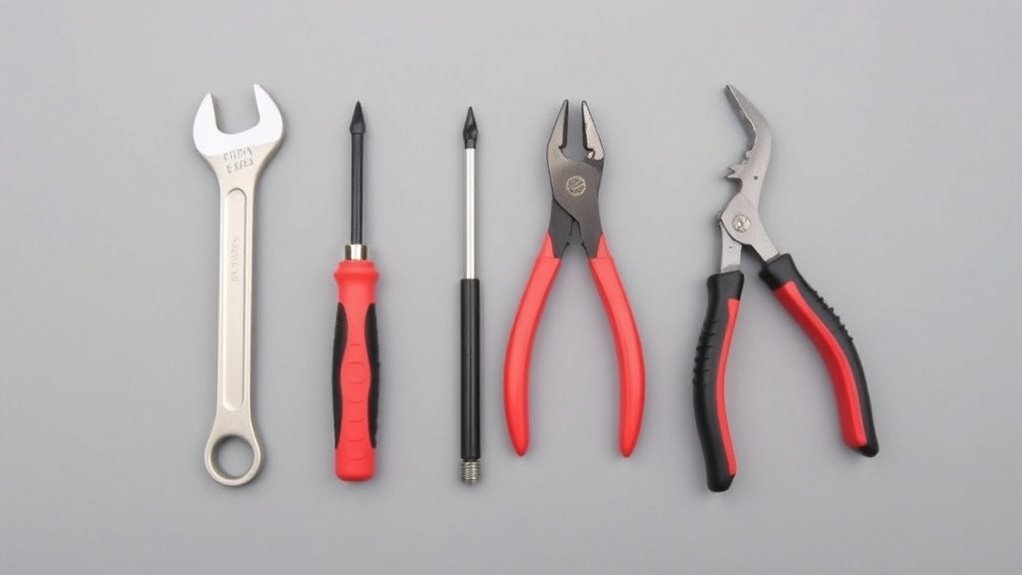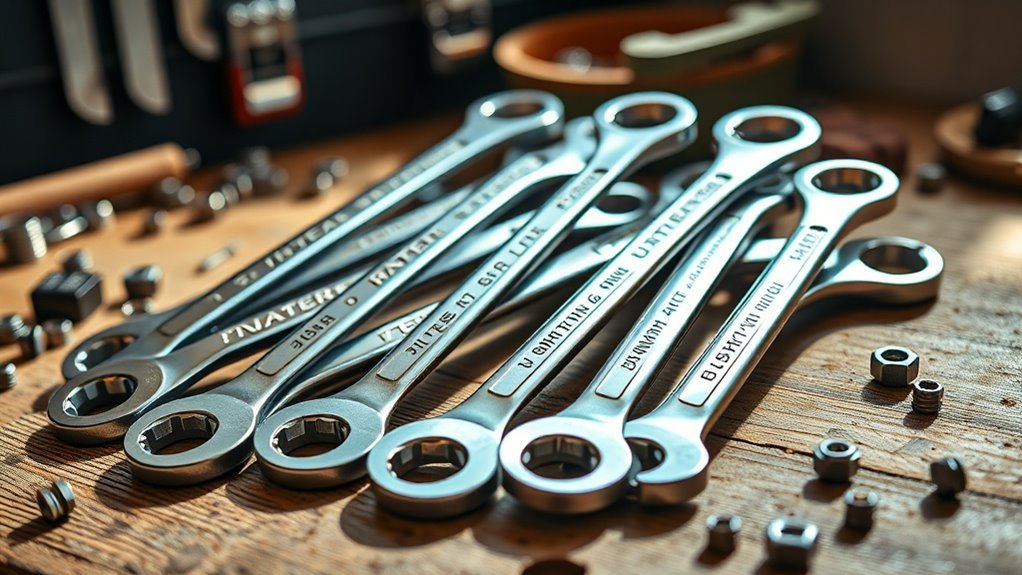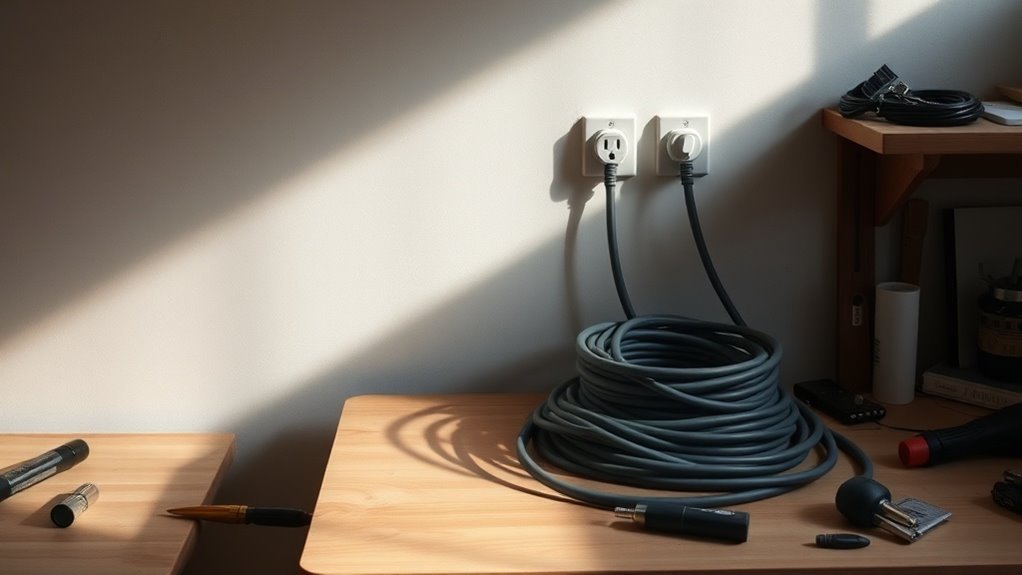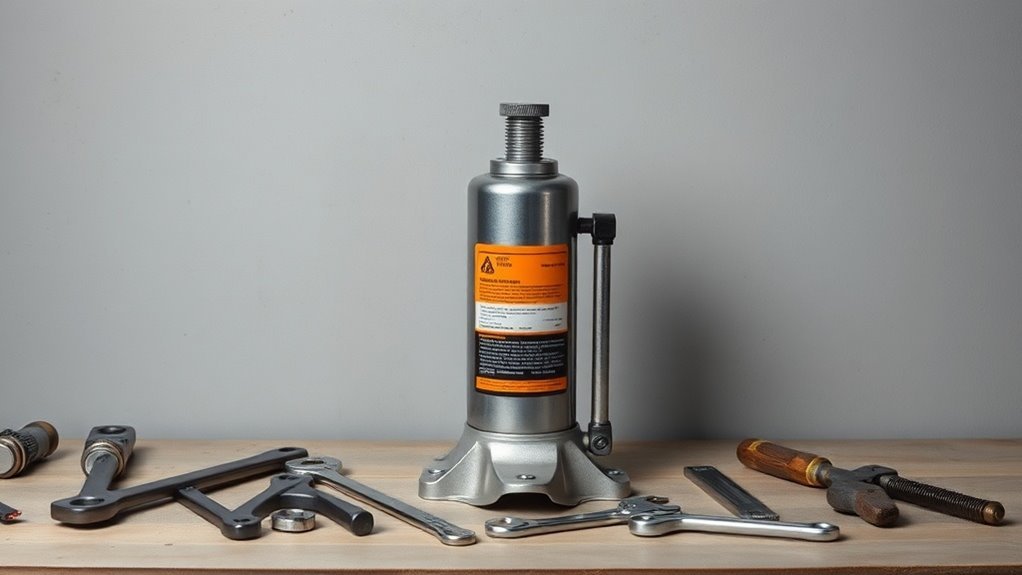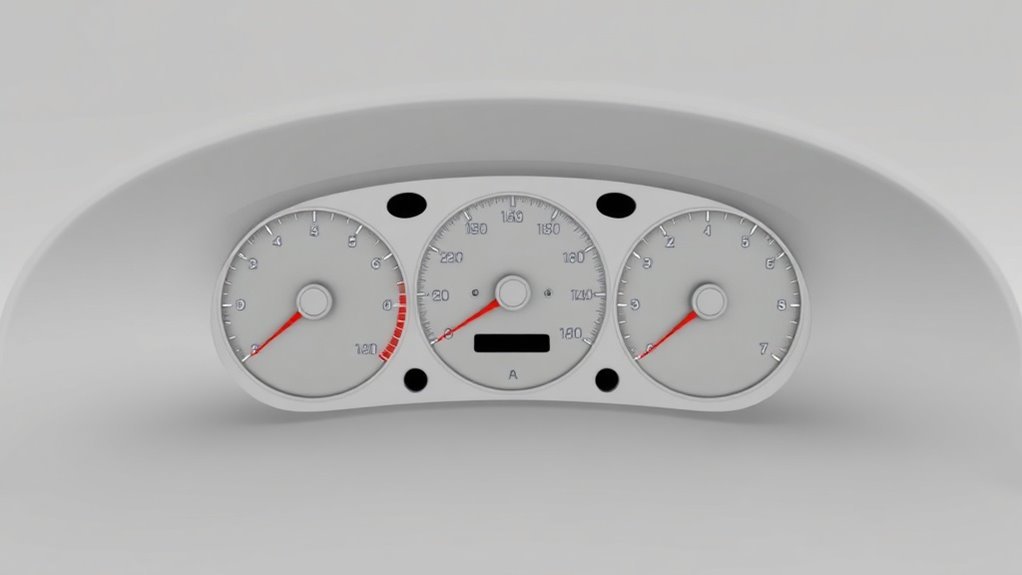How Ratchets and Socket Sets Function
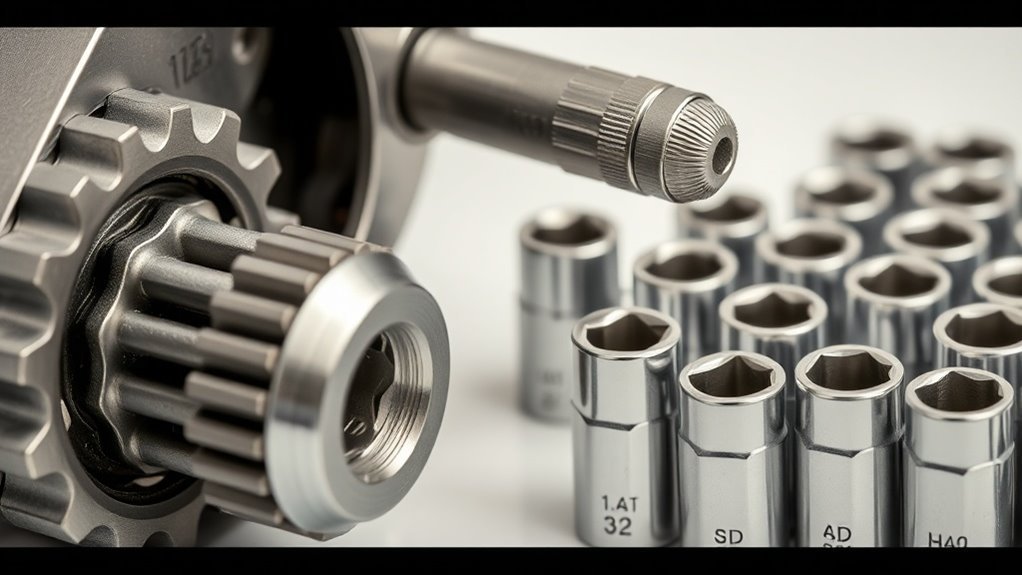
Ratchets and socket sets function by combining a unique ratchet mechanism with various socket sizes. The ratchet allows you to turn fasteners in one direction while preventing backward movement, making your tasks more efficient. You’ll select the right socket size for a snug fit around bolts or nuts, ensuring no damage occurs. Understanding different drive sizes is vital for compatibility. If you’re keen to enhance your technique and tool maintenance, there’s even more to discover about these essential tools.
Key Takeaways
- Ratchets allow for smooth directional turning of fasteners while preventing backward movement, enhancing efficiency during assembly or disassembly tasks.
- Socket sets include various socket sizes, ratchets, extensions, and adapters designed for versatility in tackling different maintenance projects.
- Proper socket sizing is crucial; using the correct fit prevents slippage and damage during fastening.
- Ratchet types, such as standard, flex head, and mini, cater to specific applications, improving workflow efficiency in tight or hard-to-reach spaces.
- Regular maintenance, including lubrication and organization, ensures optimal performance and longevity of ratchets and sockets.
The Basics of Ratchets: Understanding the Mechanism
At the heart of every ratchet is a clever mechanism that makes tightening and loosening fasteners a breeze. When you turn the handle, a pawl engages with a gear that’s fixed to the output socket. This engagement allows the ratchet to turn in one direction while preventing backward movement.
You can easily adjust your grip and continue to apply torque without repositioning the tool. It’s this unique design that brings efficiency to your tasks, allowing for tighter connections in confined spaces.
Understanding this mechanism helps you appreciate how ratchets save time and effort in any project. With a proper grip and the right angle, you’ll find using a ratchet is simpler and more effective than traditional tools. Regular maintenance of tools ensures that your ratchet remains in optimal condition for every job.
Types of Ratchets and Their Applications
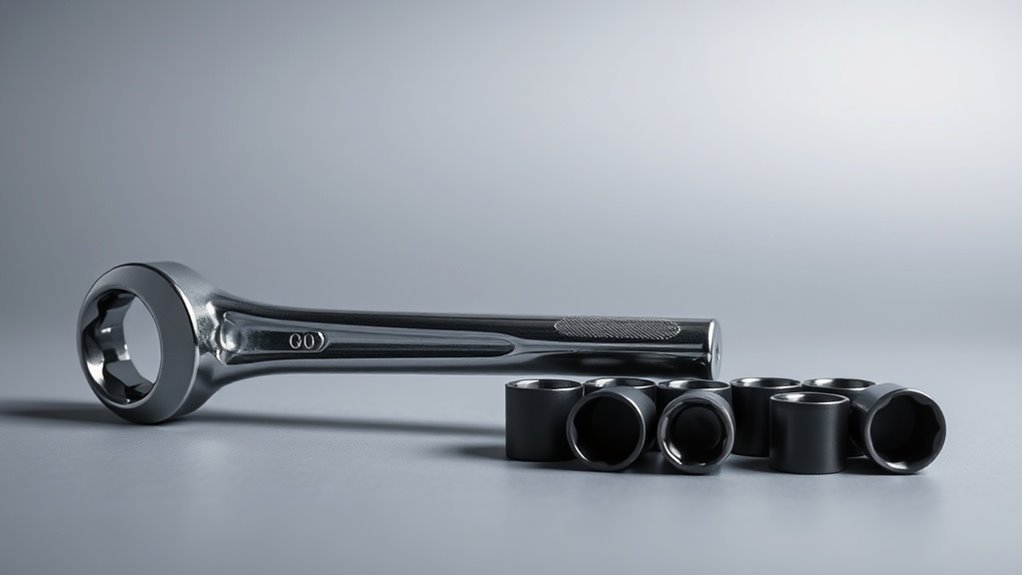
While there are various types of ratchets available, each designed for specific applications, understanding their differences can greatly enhance your tool selection process. Here’s a quick look at three common types:
| Ratchet Type | Description | Best Use |
|---|---|---|
| Standard Ratchet | Basic design for everyday tasks | General maintenance |
| Flex Head Ratchet | Adjustable head for tight spaces | Auto repair projects |
| Mini Ratchet | Compact, ideal for small areas | Electronics work |
Choosing the right ratchet can make your work easier and more efficient. With the right tool in hand, you’ll save time and reduce frustration on your projects. So next time you’re shopping, consider which type fits your needs best!
Socket Sets: What They Are and Why You Need Them
Socket sets are an essential part of any toolkit, providing you with the right tools to tackle various tasks. They’re designed for versatility, allowing you to work on everything from home repairs to automotive projects effortlessly. With the important components included, you’ll find that having a socket set makes your work faster and more efficient. Additionally, using high-quality precision tools is crucial for reducing errors and enhancing productivity in all mechanical work.
Essential Tool Components
When tackling a repair or build project, having the right tools is essential, and that’s where socket sets come into play. A typical socket set includes various sizes of sockets, which fit over nuts and bolts, allowing you to apply torque effectively.
You’ll also find a ratchet, which lets you turn the sockets without removing them from the fastener, speeding up your work. Extensions help you reach tighter spots, while adapters allow you to use sockets of different sizes with your ratchet.
Together, these components make a socket set a versatile and efficient choice for both professionals and DIYers. Investing in a quality socket set means you’ll always have the right tool on hand for your projects, ensuring success every time.
Versatile Applications and Uses
Whether you’re a seasoned mechanic or a weekend warrior tackling home projects, versatile socket sets are invaluable tools you can’t overlook. These sets provide a range of socket sizes, allowing you to address various tasks, from tightening nuts and bolts to removing automotive parts.
You’ll find that the quick-change mechanism of the ratchet saves you time and effort, especially in tight spaces where traditional wrenches prove cumbersome.
Beyond automotive work, socket sets are essential for assembling furniture, fixing appliances, and even minor home repairs. With their adaptability, you can handle a multitude of projects efficiently.
Investing in a quality socket set guarantees you’re prepared for anything life throws your way, making it a must-have addition to your toolkit.
How to Choose the Right Socket Size
How do you guarantee you’re using the right socket size for your task?
Start by checking the size of the nut or bolt you’re working with. Use a caliper or a measuring tape to measure the width across the flats; then match that measurement with your socket set.
Remember, sockets are often measured in either metric or SAE (standard), so be clear on which one you need. It’s also a good idea to have a variety of sizes on hand, as different jobs often require different sizes.
If you’re in doubt, a snug fit is essential. A socket that’s too loose can slip and strip the fastener, while one that’s too tight can damage both the socket and the fastener.
The Importance of Socket Drive Sizes
Socket drive sizes are essential for guaranteeing proper tool compatibility and effective torque application. When you’re using a ratchet, the drive size determines how well the socket fits and transfers force. If the sizes don’t match, you risk stripping fasteners or causing damage to both the tool and the workpiece.
Common sizes include 1/4″, 3/8″, and 1/2″, each suited for different jobs. Larger drive sizes typically handle more torque, making them ideal for heavy-duty tasks, while smaller sizes are perfect for tight spaces and lighter work. Understanding these sizes helps you choose the right tool for the job, ultimately saving time and reducing frustration. Additionally, knowing the various categories of impact tools can enhance your efficiency in tackling different tasks. So, always double-check drive sizes before starting your project to guarantee efficiency.
Using Ratchets and Socket Sets Effectively
When you’re ready to tackle a project, using ratchets and socket sets effectively can make all the difference in your efficiency and results. Start by choosing the right socket size for the job; it should fit snugly around the fastener without wobbling.
Use a ratchet with a comfortable grip and a smooth mechanism to minimize strain during extended use. Be mindful of your working angle; sometimes, a swivel socket can help access difficult spots.
Also, practice proper technique: apply steady pressure and avoid sudden jerks to prevent rounding off fasteners.
Finally, organize your sockets and ratchets so you can quickly find what you need, saving you time during your project. With these tips, you’ll work smarter, not harder.
Common Ratchet and Socket Set Maintenance Tips
Although you might be enthusiastic to plunge into your next project, it’s vital to keep your ratchets and socket sets well-maintained to guarantee peak performance. Here are some essential tips to help you maintain them effectively:
| Maintenance Task | Frequency | Importance |
|---|---|---|
| Clean sockets | After each use | Prevent rust buildup |
| Lubricate ratchets | Every few months | Ensure smooth operation |
| Inspect for damage | Regularly | Identify wear early |
Additionally, ensuring proper maintenance can enhance the overall durability of your tools, allowing them to withstand the demands of your tasks.
Advanced Techniques for Experienced Users
Now that you’ve got the basics down, it’s time to explore some advanced techniques to enhance your ratchet and socket set skills.
Understanding the nuances of the ratchet mechanism, selecting the right socket for the job, and mastering advanced torque techniques can greatly improve your efficiency.
Let’s break down these insights to elevate your work to the next level.
Ratchet Mechanism Insights
Understanding the intricacies of ratchet mechanisms is essential if you’re looking to elevate your tool usage. Mastering how the pawl engages with the gear can greatly improve your efficiency. Here are a few advanced techniques to enhance your skills:
| Technique | Description |
|---|---|
| Vary Torque | Experiment with different force levels for peak performance. |
| Reverse Action | Flip the switch for quick direction changes without hassle. |
| Grip Control | Maintain a steady grip to prevent slipping during use. |
| Maintenance | Regularly lubricate for smooth operation and longevity. |
| Inspection | Periodically check for wear and tear to guarantee reliability. |
Socket Selection Strategies
A solid grasp of ratchet mechanisms can set the stage for superior socket selection strategies.
When faced with a job, start by evaluating the specific needs of your task. Choose sockets based on the shape and size of the fasteners—often, you’ll need deep sockets for nuts seated further down. Consider the drive size too; a ½-inch drive offers more torque, while a ¼-inch is better for precision work.
Don’t overlook the socket material; chrome vanadium is durable, while chrome molybdenum provides added strength for heavy-duty tasks. Finally, make sure you use a ratchet that fits comfortably in your hand, allowing for greater maneuverability and efficiency.
With these strategies, you’ll improve your overall effectiveness in any project.
Advanced Torque Techniques
While mastering basic torque techniques is essential, diving into advanced strategies can greatly elevate your skills.
You’ll find that understanding nuanced torque application can lead to better outcomes in your projects. Here are some advanced torque techniques to contemplate:
- Torque Angle Measurement: Combine torque with angle settings for precise fastening.
- Lubrication Considerations: Adjust torque requirements based on lubrication to avoid over-torquing.
- Use of Electronic Torque Wrenches: Leverage technology for accuracy in high-stakes situations.
- Torque Sequencing: Apply torque in a specific sequence to prevent warping or misalignment in assemblies.
Questions
Can Ratchets Be Used With Non-Socket Tools?
No, ratchets aren’t typically used with non-socket tools. They’re designed for socket attachments, which allow for better torque and efficiency. Using them with different tools might create complications and inefficiencies in your tasks.
What Materials Are Ratchets and Sockets Typically Made From?
Did you know that over 80% of ratchets and sockets are made from high-carbon steel? They’re typically crafted from chrome vanadium or chrome molybdenum, which provide strength and durability for all your mechanical projects.
How Do I Clean My Ratchet and Socket Set?
To clean your ratchet and socket set, start by wiping them down with a soft cloth. For stubborn grime, use soapy water and a brush. Rinse, dry, and store them in a dry place to prevent rust.
Can I Use Any Socket With My Ratchet?
You can’t use just any socket with your ratchet. Each ratchet has a specific drive size, so it’s essential to match the sockets accordingly. Using the wrong socket might lead to frustrating slips or damage.
How Do I Know When to Replace a Ratchet?
You should replace a ratchet if it slips under load, makes grinding noises, or has worn teeth. Also, if the handle’s loose or it’s difficult to engage, it’s time for a new one.
Conclusion
To sum up, understanding ratchets and socket sets can make your life a whole lot easier when tackling repairs. Remember, “A tool in the hand is worth two in the bush.” By choosing the right tools and applying them correctly, you’re not just saving time—you’re enhancing your skills. So, whether you’re a novice or experienced, mastering these tools will take your projects to the next level. Happy tinkering!

